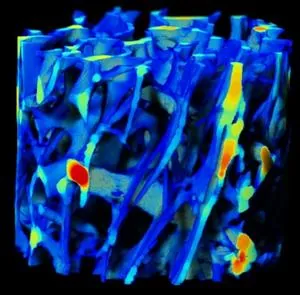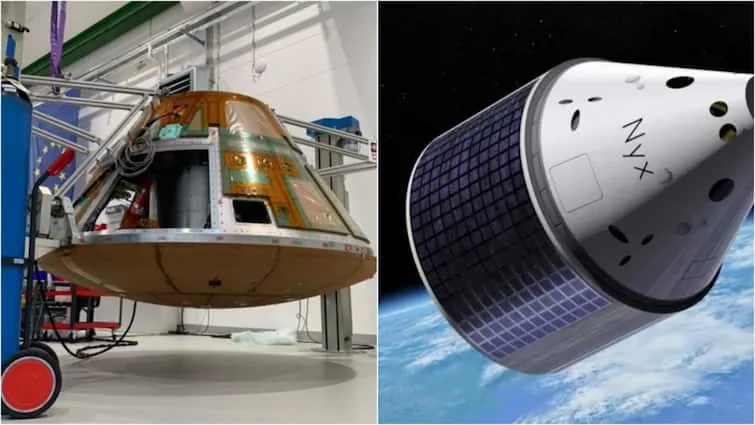
Unlocking the Secrets of Shark Skeletons: How Blacktip Sharks Are Redefining Strength and Flexibility
2025-05-20
Author: Mei
A Deep Dive into Shark Evolution
Sharks have been roaming our oceans for over 450 million years, sharpening their evolutionary edge not just as swift swimmers but as masters of efficiency. Unlike most creatures, these magnificent animals possess skeletons crafted from resilient, mineralized cartilage instead of bones. This unique construction allows them to glide through water with a blend of power and grace, thanks to spines that store and release energy like natural springs.
Revealing the Nanoscale Architecture of Sharks
Now, an exciting scientific venture is exposing the microscopic 'sharkitecture' that enables these apex predators to thrive under the relentless demands of their aquatic lives. Researchers from Florida Atlantic University, in collaboration with the German Electron Synchrotron (DESY) and NOAA Fisheries, have employed advanced synchrotron X-ray nanotomography to examine the intricate internal structures of blacktip sharks (Carcharhinus limbatus) like never before.
Discovering the Building Blocks of Strength
The findings, published in the journal ACS Nano, reveal two distinct regions in the blacktip shark's mineralized cartilage: the corpus calcareum and the intermediale. Although both areas are packed with densely arranged collagen and bioapatite, their internal architectures vary significantly. This design includes mineralized plates arranged in porous formations, reinforced with thick struts to bear the intense stress from continuous swimming — a critical survival adaptation.
The Remarkable Strength and Flexibility of Cartilage
What’s even more fascinating? At the nanoscale level, researchers have uncovered tiny, needle-like bioapatite crystals aligned with collagen fibers, granting the cartilage both strength and flexibility. Additionally, they’ve identified twisted fiber structures primarily made from collagen, suggesting an advanced design to prevent cracks and ensure durability during movement.
Nature’s Blueprint for Innovation
Vivian Merk, Ph.D., the lead author of the study, posits that nature’s ability to combine minerals with biological materials is the key to creating strong yet flexible structures. "Learning from the design strategies of sharks may pave the way for future innovations in materials science," Merk explains.
Mechanical Testing: Insights into Resilience
Through experiments applying mechanical stress to microscopic samples of shark vertebrae, researchers found that tiny deformations occurred after just one cycle of pressure. Fractures, however, only emerged after multiple stress applications and remained localized, highlighting a sophisticated material resilience.
A Leap into the Real World: Applications Beyond Biology
Blacktip sharks, known for their agility and speeds of up to 20 miles per hour, are not just marvels of evolution but also offer engineers and materials scientists vital insights. Stella Batalama, Ph.D., stresses the power of collaboration among scientists to uncover the ingenious designs found in nature, which could significantly influence the development of advanced materials for everything from medical implants to impact-resistant gear.
Conclusion: Lessons from the Ocean’s Apex Predators
As we unravel the mysteries of shark cartilage at the nanoscale, we gain invaluable knowledge that could revolutionize the design and material science field. The unique structural features of shark skeletons present a compelling model for creating resilient and high-performance materials, firmly establishing that nature’s designs remain the ultimate blueprint for human innovation.



 Brasil (PT)
Brasil (PT)
 Canada (EN)
Canada (EN)
 Chile (ES)
Chile (ES)
 Česko (CS)
Česko (CS)
 대한민국 (KO)
대한민국 (KO)
 España (ES)
España (ES)
 France (FR)
France (FR)
 Hong Kong (EN)
Hong Kong (EN)
 Italia (IT)
Italia (IT)
 日本 (JA)
日本 (JA)
 Magyarország (HU)
Magyarország (HU)
 Norge (NO)
Norge (NO)
 Polska (PL)
Polska (PL)
 Schweiz (DE)
Schweiz (DE)
 Singapore (EN)
Singapore (EN)
 Sverige (SV)
Sverige (SV)
 Suomi (FI)
Suomi (FI)
 Türkiye (TR)
Türkiye (TR)
 الإمارات العربية المتحدة (AR)
الإمارات العربية المتحدة (AR)